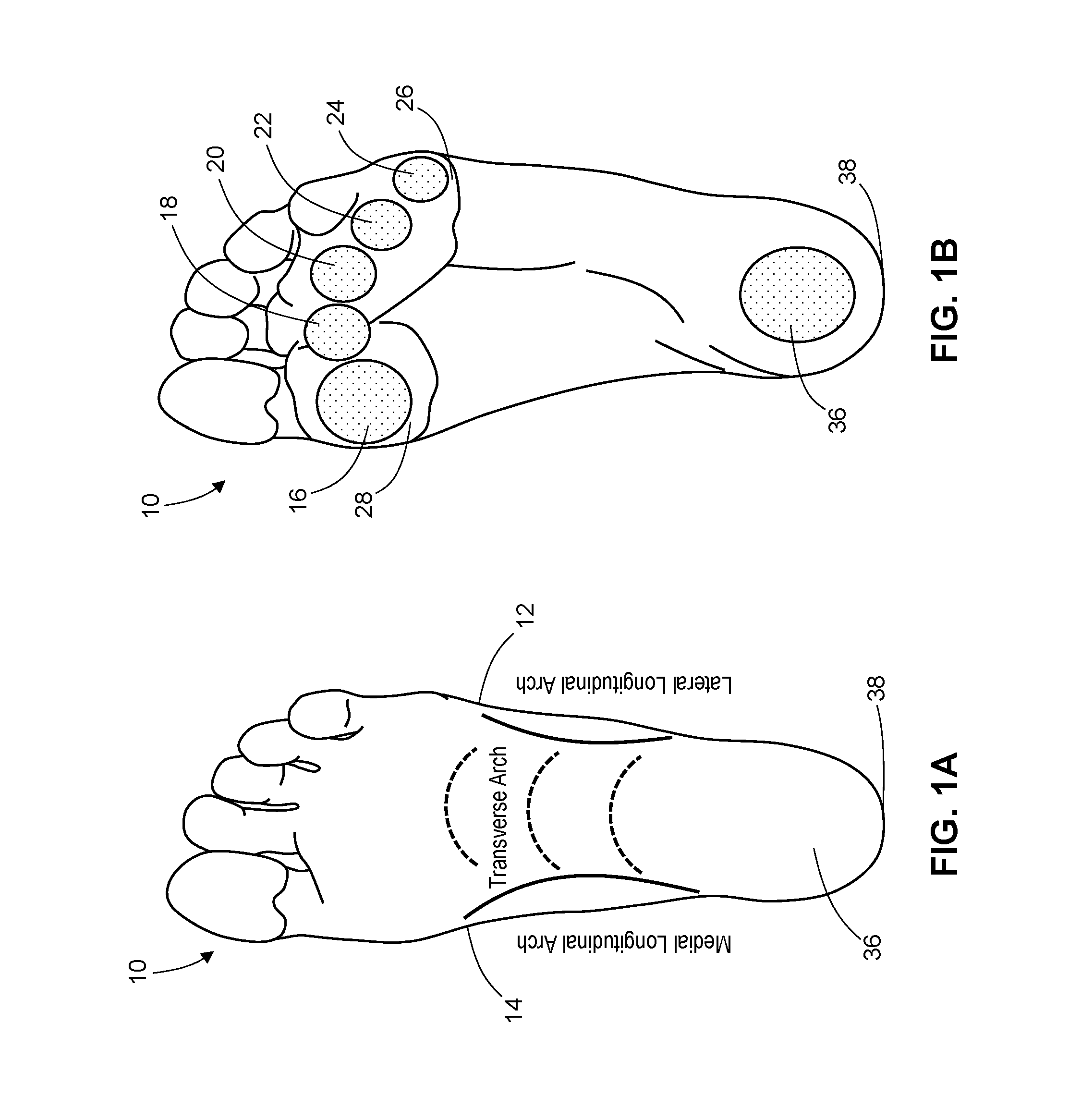Methods and systems for sizing an orthotic device
a technology for orthotics and foot, applied in the field of sizing an orthotic device for a foot, can solve the problems of not restoring the alignment of the foot structure (bones, joints, ligaments, etc.) to the physiologic natural condition, not optimizing the foot function, and other limitations of the related ar
- Summary
- Abstract
- Description
- Claims
- Application Information
AI Technical Summary
Benefits of technology
Problems solved by technology
Method used
Image
Examples
Embodiment Construction
I. Definitions
[0057]Various aspects now will be described more fully hereinafter. Such aspects may, however, be embodied in many different forms and should not be construed as limited to the embodiments set forth herein; rather, these embodiments are provided so that this disclosure will be thorough and complete, and will fully convey its scope to those skilled in the art.
[0058]Where a range of values is provided, it is intended that each intervening value between the upper and lower limit of that range and any other stated or intervening value in that stated range is encompassed within the disclosure. For example, if a range of 1 μm to 8 μm is stated, it is intended that 2 μm, 3 μm, 4 μm, 5 μm, 6 μm, and 7 μm are also explicitly disclosed, as well as the range of values greater than or equal to 1 μm and the range of values less than or equal to 8 μm.
[0059]The singular forms “a,”“an,” and “the” include plural referents unless the context clearly dictates otherwise. Thus, for example...
PUM
 Login to View More
Login to View More Abstract
Description
Claims
Application Information
 Login to View More
Login to View More - R&D
- Intellectual Property
- Life Sciences
- Materials
- Tech Scout
- Unparalleled Data Quality
- Higher Quality Content
- 60% Fewer Hallucinations
Browse by: Latest US Patents, China's latest patents, Technical Efficacy Thesaurus, Application Domain, Technology Topic, Popular Technical Reports.
© 2025 PatSnap. All rights reserved.Legal|Privacy policy|Modern Slavery Act Transparency Statement|Sitemap|About US| Contact US: help@patsnap.com



